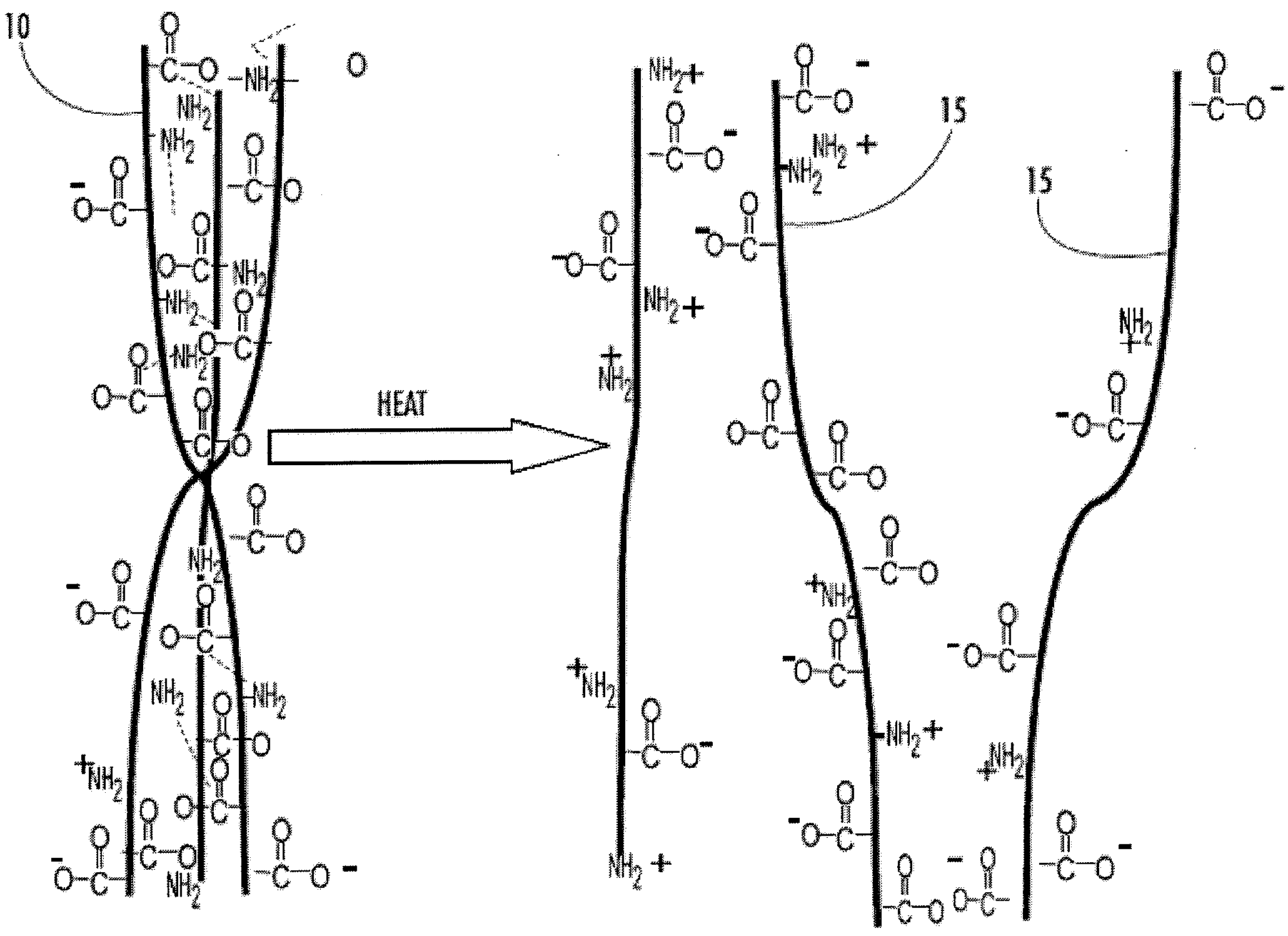Cryopreservation of cells using cross-linked bioactive hydrogel matrix particles
a bioactive hydrogel and cell technology, applied in the field of cryopreservation of cells, can solve the problems of cell cryopreservation, cell disruption between initial culturing, and particularly arisen cell disruption, and achieve the effect of improving known methods and simplifying them
- Summary
- Abstract
- Description
- Claims
- Application Information
AI Technical Summary
Benefits of technology
Problems solved by technology
Method used
Image
Examples
example 1
Formation of Cross-Linked Hydrogel Matrix
[0168]20 g of dextran (MW 500,000 Da) was weighed into a tared beaker containing 180 g phosphate-buffered saline. The dextran was dissolved with constant stirring and 8 g sodium meta-periodate (available from Sigma, product number S1147) was added to the dissolved dextran. The beaker was wrapped in foil to prevent photo-catalyzed side-reactions, and placed in a refrigerator on a stirring plate for 12 hours at 5° C.±3° C. The beaker was removed, 50 mL ethylene glycol was added to consume excess periodate, and the quenching reaction was allowed to proceed for 30 minutes at room temperature. The reaction mixture was pH adjusted to 7.5±0.5 with 0.1 N NaOH. The reaction products were separated using tangential flow filtration (Filtron Mini-Ultrasette Pall Filtration Products, product number OS100C77). The solution mass was reduced by half, and replaced with a 4-fold volume of phosphate buffered saline. The purified product was reduced to a final v...
example 2
Effect of Dextran Oxidation on Gel Strength
[0172]20 g of dextran (MW 500,000 Da) (available from Sigma, St. Louis, Mo.) was added to a tared beaker containing 200 mL of phosphate buffered saline (PBS) and stirred to form a uniform solution. A further 8 g of sodium meta-periodate was added to the dextran solution, which was wrapped in foil, and allowed to stir overnight at 5° C.±3° C. The reaction was quenched with 50 mL ethylene glycol, and the solution was adjusted with 0.1 M NaOH to a pH of 7.5±0.5. The product was purified using tangential filtration, and concentrated to a 20% dextran solution. Sterile filtered solutions were stored frozen until use. Hydroxylamine titration showed that this dextran was 18% oxidized. Frozen samples showed no loss in oxidation levels after 8 months storage at 20° C.±5° C.
[0173]A series of thermoreversible hydrogel and oxidized dextran formulations were prepared with fixed total gelatin concentration (12%) and increasing concentrations of oxidized d...
example 3
Use of Hydrogel Matrix as Cell Culture Substrate
[0174]20 g of dextran (MW 68,000 Da) (available from Sigma, St. Louis, Mo.) was added to a tared beaker containing 200 mL of phosphate buffered saline (PBS) and stirred to form a uniform solution. A further 8 g of sodium meta-periodate was added to the dextran solution, which was wrapped in foil, and allowed to stir overnight at 5° C.±3° C. The reaction was quenched with 50 mL ethylene glycol, and adjusted with 0.1 M NaOH to a pH of 7.5±0.5. The product was purified using tangential filtration, and concentrated to a 20% dextran solution. Sterile filtered solutions were stored frozen until use. Hydroxylamine titration showed that this dextran was 14% oxidized.
[0175]A thermoreversible hydrogel comprising gelatin and dextran was melted and added to several sets of mixtures of native and oxidized dextrans, mixed and cast into a T-25 culture flask. The concentration of oxidized dextran in each sample ranged from about 3% to about 21%.
[0176]...
PUM
| Property | Measurement | Unit |
|---|---|---|
| Temperature | aaaaa | aaaaa |
| Temperature | aaaaa | aaaaa |
| Pore size | aaaaa | aaaaa |
Abstract
Description
Claims
Application Information
 Login to View More
Login to View More - R&D
- Intellectual Property
- Life Sciences
- Materials
- Tech Scout
- Unparalleled Data Quality
- Higher Quality Content
- 60% Fewer Hallucinations
Browse by: Latest US Patents, China's latest patents, Technical Efficacy Thesaurus, Application Domain, Technology Topic, Popular Technical Reports.
© 2025 PatSnap. All rights reserved.Legal|Privacy policy|Modern Slavery Act Transparency Statement|Sitemap|About US| Contact US: help@patsnap.com



